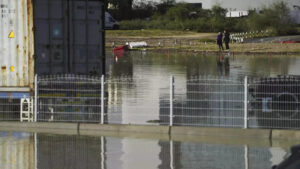AL AIN, UAE: The ages of some of the oldest animals in the care of Al Ain Zoo have exceeded their normal life expectancy in the wild.
A 36-year-old chimpanzee, a 47-year-old lappet-faced vulture and a 34-year-old mugger crocodile are among those aging animals at Al Ain Zoo, reported the Emirates News Agency, WAM, on Wednesday.
Since the animals have been protected from overhunting and the inevitable urban sprawl they would face, the long lifespans of these species has exceeded their life expectancy in their natural habitat by decades, said WAM.
The zoo, which houses over 4,000 animals, implements modern, state-of-the-art technologies and strategies for the registration, monitoring, genetic study, veterinary care and behavioral rehabilitation of its animals.
Ghanim Mubarak Al-Hajjeri, director-general of the zoo and Aquarium Public Institution in Al Ain, said: “We are living in the age of technology, and we must utilize it to the maximum in our work.”
The zoo uses ZIMS, a wildlife management software, considered one of the best resources for zoos as it provides reliable information on animals and their environments to serve animal management and accomplish conservation goals.
Al Ain Zoo also uses advanced genetic conservation programs to maintain genetic integrity and ensure the preservation of species, with the possibility of releasing some healthy offspring into the wild to help repopulation.
According to Al-Hajjeri, the technologies adopted by the zoo have saved a tremendous amount of both effort and time and, over the years, have provided highly accurate results in monitoring animals, studying their behavioral patterns and keeping an eye on their health, while supporting the zoo’s mission to protect endangered species.
The technology-based strategies, he explained, range from animal facial recognition and DNA analysis to physical and behavioral rehabilitation and the collection of data to share with global agencies in order to join forces in the quest for wildlife preservation.
With the use of modern technology, Al-Hajjeri said, the most basic animal calming techniques become safer and more efficient.
“It all contributes to improving the quality of life of animals and adds to our ability to preserve wildlife,” he said.

Ages of oldest animals in the care of Al Ain Zoo exceed normal lifespan
Trending now






